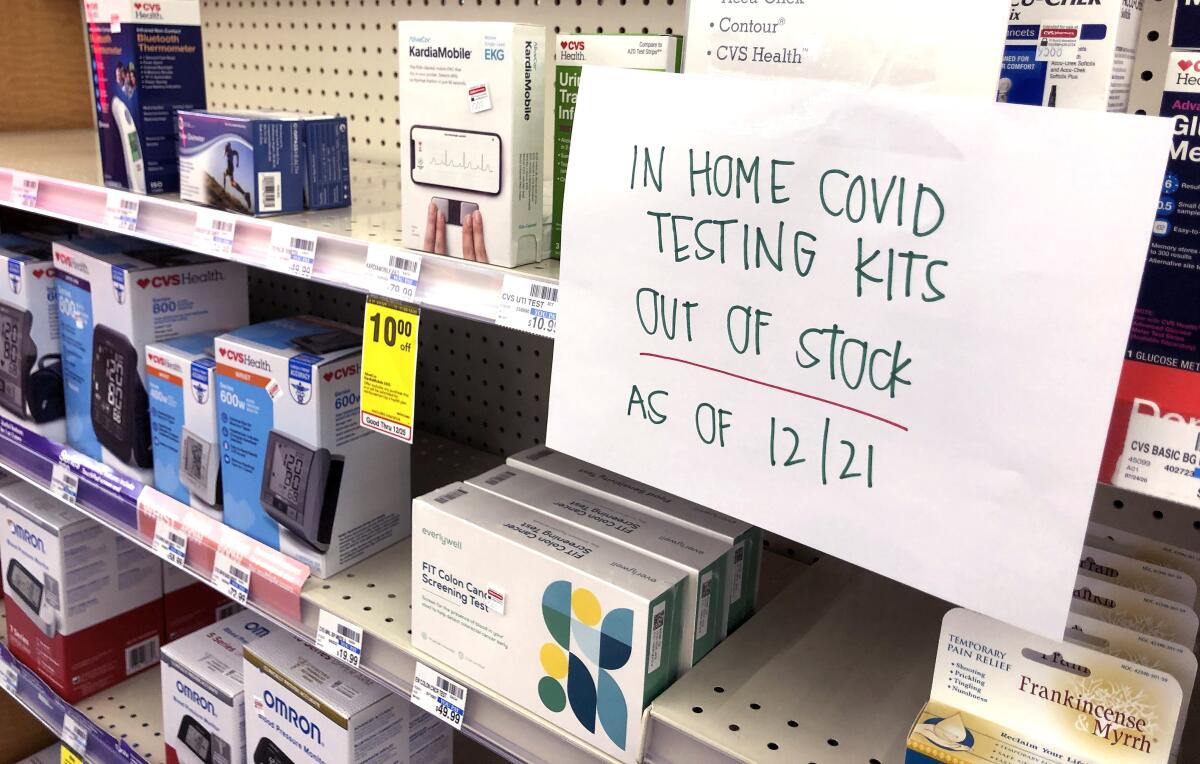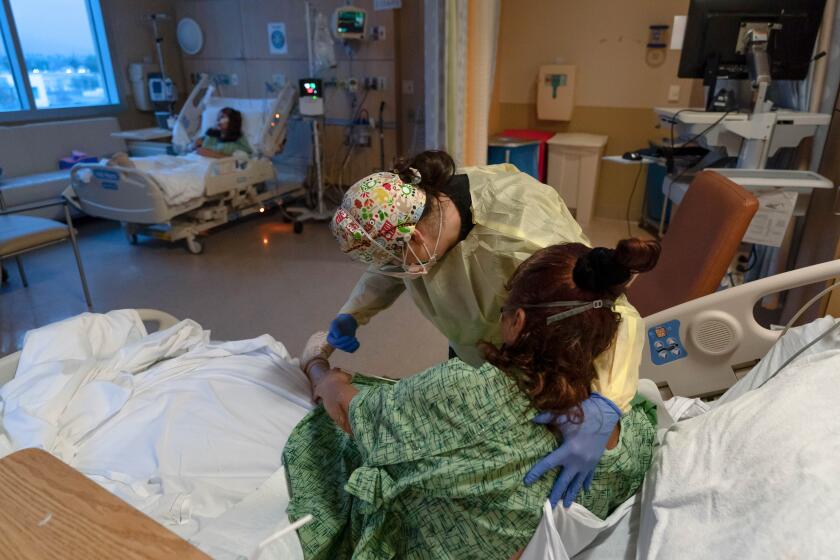Editorial: COVID-19 is surging again. But Omicron leaves us with a tiny bit of hope

- Share via
The terrible year of 2020 ended with a glimmer of hope. While the United States and California were in the grip of the worst surge yet of the pandemic, the first vaccines against COVID-19 were being distributed to healthcare workers and plans were underway for the largest immunization rollout in the nation’s history.
At that point, it looked like 2021 would be the year that the U.S. got a handle on the pandemic.
Alas, it was not to be. Too many people rejected the free vaccinations and chose to flout simple infection-control methods like mask-wearing, leaving the door open for the more infectious Delta variant. Then, in November, the world was shaken by the emergence of an even more infectious strain of the coronavirus, Omicron, which has quickly overtaken Delta to become the dominant strain in the U.S.
California reported its highest single day total of COVID-19 hospitalizations in nearly three months and a nearly 14% increase from last week.
In the end, more Americans died of COVID-19 in 2021 than in 2020. As of Tuesday, nearly 820,000 Americans have died from the disease, which is considerably more than those thought to have died during the 1918 H1N1 influenza pandemic. And with a second winter surge well underway, the dying will continue into 2022.
But there is some hope as data trickle in about Omicron. Early studies out of Britain and South Africa and initial data from U.S. hospitals support what healthcare professionals have been reporting anecdotally for weeks — that Omicron appears less likely than earlier strains to result in serious illness and hospitalization, especially for vaccinated people.
If the data hold, it would be a tremendous relief given that Omicron replicates and spreads with terrifying speed, even among vaccinated people. And it could mean that the coronavirus is on the path to a mild, endemic state that would put an end to the pandemic.
Now, here’s where we temper this sliver of hope with stark reality. Even if Omicron is just half as lethal (as some data suggest) it is still quite deadly — just not as much as we feared. And even if it’s relatively mild for many of those who are fully vaccinated, tens of millions of Americans remain unvaccinated, including children under 5 who are not yet cleared for COVID-19 shots and whose numbers are increasing in hospitals.
It’s nice to have a tiny bit of good news as 2021 ends in another round of canceled plans and overtaxed hospitals. We should use this occasion to double down on public health protections, such as placing vaccination and testing restrictions on domestic air travel, and to increase vaccination and booster shots. The pandemic may not be over, but it’s possible that with effort, 2022 may really be a better, less deadly year.
More to Read
A cure for the common opinion
Get thought-provoking perspectives with our weekly newsletter.
You may occasionally receive promotional content from the Los Angeles Times.











